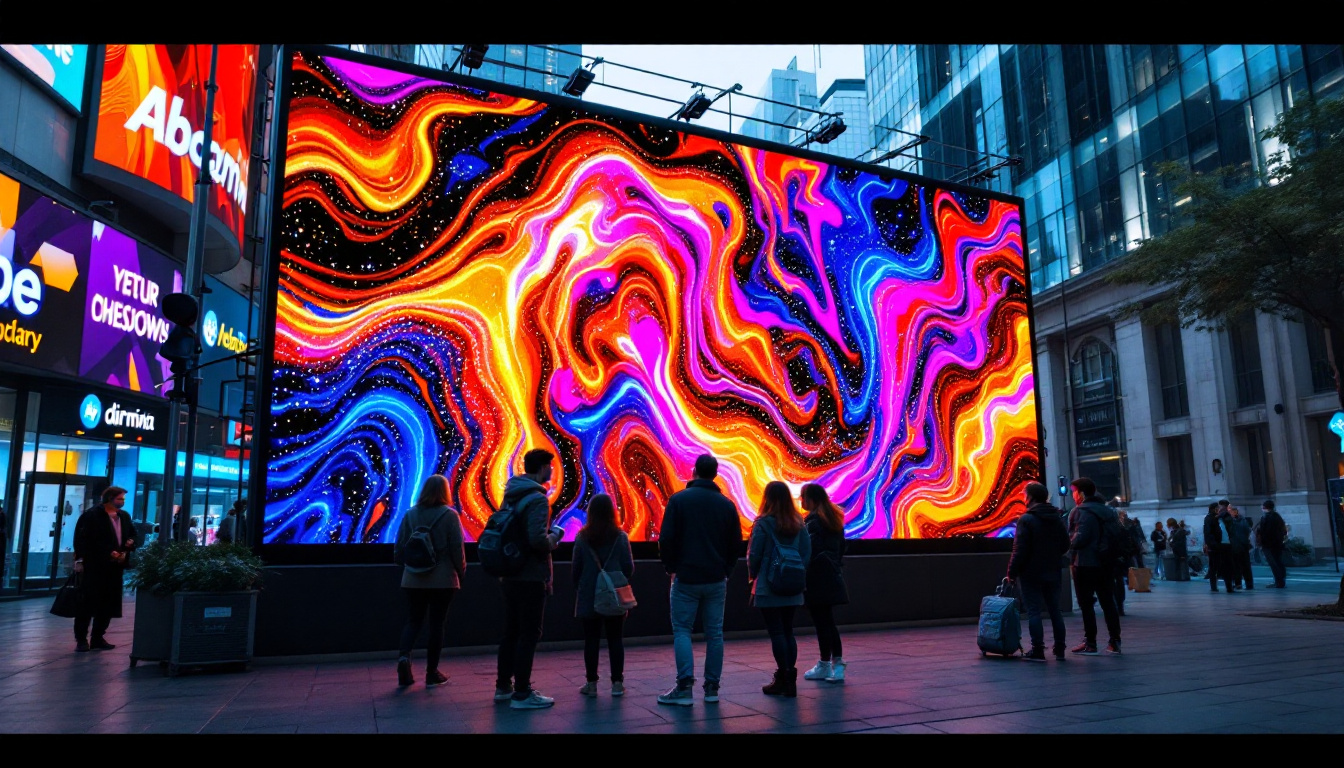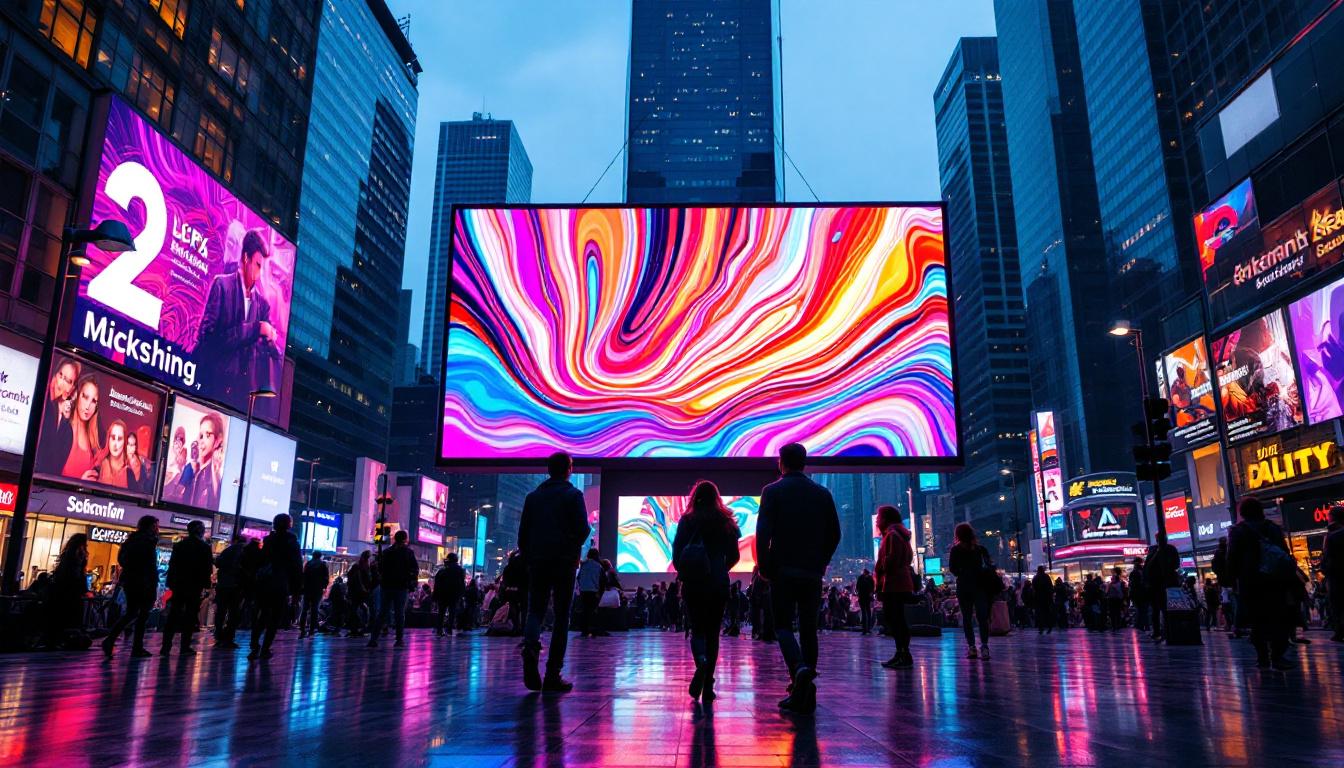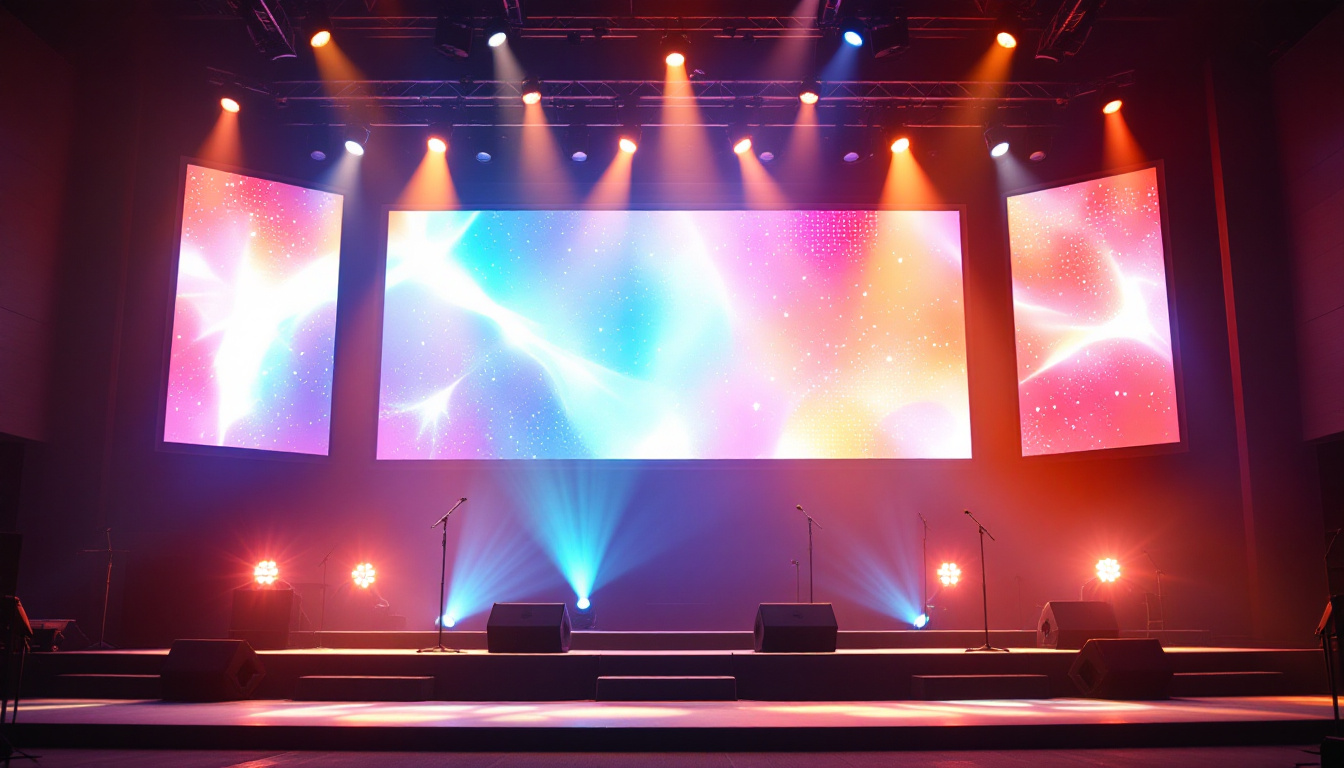Largest LCD Display: LED Display Explained
In the realm of modern technology, displays have undergone a remarkable evolution, transforming the way we consume information and entertainment. Among the various types of displays available today, LCD (Liquid Crystal Display) and LED (Light Emitting Diode) technologies stand out as the most prevalent. This article delves into the intricacies of these display technologies, focusing on the largest LCD displays, their applications, and how they compare to LED displays.
Understanding LCD Technology
Liquid Crystal Display technology has become a cornerstone in the display industry, primarily due to its versatility and efficiency. LCDs utilize liquid crystals sandwiched between two layers of glass or plastic, which manipulate light to produce images. The technology is widely used in televisions, computer monitors, and smartphones, making it an integral part of daily life.
How LCDs Work
At the heart of an LCD is its ability to control light. When an electric current passes through the liquid crystals, they align in such a way that they either block or allow light to pass through. This process is facilitated by a backlight, which illuminates the display. The combination of liquid crystals and the backlight creates the vibrant images we see on our screens.
LCDs can be further categorized into two main types: Twisted Nematic (TN) and In-Plane Switching (IPS). TN panels are known for their fast response times, making them ideal for gaming, while IPS panels offer superior color accuracy and wider viewing angles, making them suitable for professional graphic work. Additionally, advancements in technology have led to the development of Vertical Alignment (VA) panels, which provide deeper blacks and better contrast ratios, making them a popular choice for home theater setups.
Applications of LCD Displays
The applications of LCD displays are vast and varied. From large-scale installations in public spaces to personal devices, LCD technology has found its place in numerous sectors. In retail, for instance, large LCD screens are used for advertising and information dissemination, captivating customers with dynamic content. These displays can be programmed to showcase promotional videos, product information, and even interactive elements that engage consumers directly, enhancing the shopping experience.
In the educational sector, LCD projectors and interactive whiteboards have revolutionized the way information is shared in classrooms. These tools allow educators to present multimedia content in an engaging manner, fostering a more interactive learning environment. Meanwhile, in healthcare, LCD displays are utilized in medical imaging and patient monitoring systems, providing critical information at a glance. The clarity and precision of LCD technology are vital in these settings, where accurate data visualization can be the difference in patient care. Furthermore, the integration of LCDs in wearable health devices is on the rise, allowing for real-time health monitoring and data analysis, thus empowering individuals to take charge of their health more effectively.
The Largest LCD Displays in the World
When it comes to size, LCD technology has pushed the boundaries of what is possible. The largest LCD displays are often found in commercial settings, showcasing stunning visuals that can be seen from great distances. These colossal screens are designed to deliver high-resolution images and videos, making them ideal for advertising and entertainment.
Notable Examples of Large LCD Displays
One of the most famous examples of a large LCD display is the Samsung 98-inch QLED TV, which combines LCD technology with quantum dot enhancement for superior color reproduction. This television is designed for home use but showcases the capabilities of LCD technology at a larger scale.
In a more commercial context, the largest LCD video wall can be found in Times Square, New York City. This massive installation features multiple LCD panels that work together to create a seamless display, captivating millions of visitors each year. Such installations highlight the potential of LCD technology in urban environments, where visibility and impact are paramount.
Advantages of Large LCD Displays
Large LCD displays offer several advantages that make them appealing for various applications. Firstly, they provide exceptional image quality, with high resolution and vibrant colors that enhance viewer engagement. Secondly, they are energy-efficient compared to traditional projection systems, making them a more sustainable choice for businesses.
Moreover, large LCD displays are versatile in terms of content delivery. They can be easily updated with new information, allowing businesses to adapt their messaging in real-time. This flexibility is particularly beneficial in fast-paced environments such as retail and events.
LED Display Technology: An Overview
While LCD displays have dominated the market for years, LED technology has emerged as a formidable competitor. LED displays utilize light-emitting diodes to create images, offering several advantages over traditional LCDs. Understanding the differences between these technologies is crucial for consumers and businesses alike.
How LED Displays Work
LED displays operate by using an array of tiny light-emitting diodes to produce images. Unlike LCDs, which rely on a backlight, LED displays emit their own light, allowing for greater brightness and contrast. This technology can be categorized into two types: direct view and indirect view. Direct view LED displays are commonly used for large outdoor screens, while indirect view displays are often found in indoor settings.
The ability of LED displays to achieve deeper blacks and brighter whites makes them particularly appealing for high-contrast applications such as digital signage and video walls. Additionally, LED technology has advanced to include features like flexible displays and transparent screens, further expanding its potential applications.
Applications of LED Displays
LED displays are increasingly being utilized in various sectors, from entertainment to transportation. In the entertainment industry, LED screens are a staple at concerts and events, providing dynamic visuals that enhance the overall experience. Their ability to be configured in various shapes and sizes allows for creative installations that captivate audiences.
In transportation, LED displays are used for information boards at airports and train stations, providing real-time updates to travelers. Their visibility in bright daylight makes them ideal for outdoor applications, where traditional LCDs may struggle to compete.
Comparing LCD and LED Displays
When choosing between LCD and LED displays, it is essential to consider various factors, including image quality, energy efficiency, and application suitability. Each technology has its strengths and weaknesses, making them suitable for different use cases.
Image Quality and Performance
In terms of image quality, LED displays generally outperform LCDs due to their ability to achieve higher brightness levels and better contrast ratios. This advantage is particularly noticeable in bright environments, where LED displays can maintain visibility without sacrificing image quality.
However, high-end LCDs, especially those utilizing IPS technology, can deliver excellent color accuracy and viewing angles, making them suitable for professional applications where precision is critical. Ultimately, the choice between the two technologies may come down to specific use cases and personal preferences.
Energy Efficiency and Cost
Energy efficiency is another critical factor to consider. LED displays are typically more energy-efficient than LCDs, as they consume less power while providing superior brightness. This efficiency can lead to significant cost savings over time, especially for large installations that operate continuously.
On the other hand, LCD displays tend to be more affordable upfront, making them an attractive option for consumers on a budget. However, the long-term energy savings associated with LED technology may offset the initial investment for businesses looking to reduce operational costs.
Future Trends in Display Technology
The display technology landscape is continuously evolving, with advancements in both LCD and LED technologies paving the way for innovative applications. As consumer demands grow, manufacturers are exploring new ways to enhance display performance and functionality.
Emerging Technologies
One of the most exciting developments in display technology is the rise of MicroLED displays. These displays combine the best features of LCD and LED technologies, offering high brightness, excellent color accuracy, and the potential for ultra-thin designs. MicroLED technology is still in its infancy but holds promise for future applications in both consumer and commercial markets.
Additionally, advancements in OLED (Organic Light Emitting Diode) technology are gaining traction. OLED displays offer unparalleled contrast ratios and color reproduction, making them ideal for high-end televisions and mobile devices. As production costs decrease, OLED technology may become more accessible to a broader audience.
Integration with Smart Technology
The integration of display technology with smart systems is another trend shaping the future. Smart displays equipped with artificial intelligence and connectivity features are becoming increasingly common in homes and businesses. These displays can adapt to user preferences, providing personalized content and enhancing the overall user experience.
Moreover, the rise of augmented reality (AR) and virtual reality (VR) technologies is pushing the boundaries of traditional displays. As these technologies evolve, the demand for high-quality displays that can deliver immersive experiences will continue to grow.
Conclusion
The world of display technology is vast and ever-changing, with LCD and LED displays leading the charge in innovation and application. Understanding the differences between these technologies is essential for making informed decisions, whether for personal use or business applications. The largest LCD displays serve as a testament to the capabilities of this technology, while LED displays continue to push the envelope with their superior performance and energy efficiency.
As advancements in display technology continue to unfold, consumers and businesses alike can look forward to a future filled with stunning visuals and enhanced interactivity. Whether it’s through the vibrant colors of an LED display or the precise imagery of an LCD, the future of visual technology is bright and full of possibilities.
Explore the Future of Visual Technology with LumenMatrix
Ready to elevate your visual experience with the latest in LED display technology? LumenMatrix is at the forefront of innovation, offering a wide array of LED display solutions tailored to your needs. From vibrant Indoor LED Wall Displays to dynamic Outdoor LED Wall Displays, and from versatile Vehicle LED Displays to engaging LED Sports Displays, our products are designed to captivate and communicate effectively. Discover how our Custom LED Displays, All-in-One LED Displays, and LED Transparent Displays can transform your space and message. Check out LumenMatrix LED Display Solutions today and join the revolution in visual communication.































